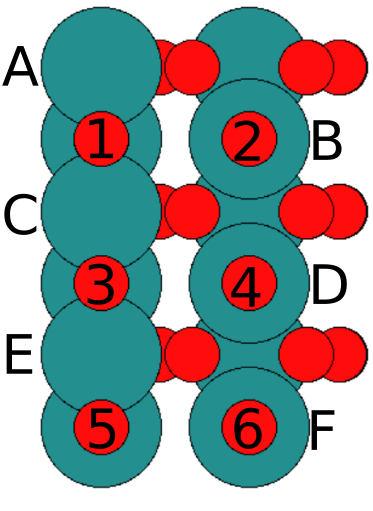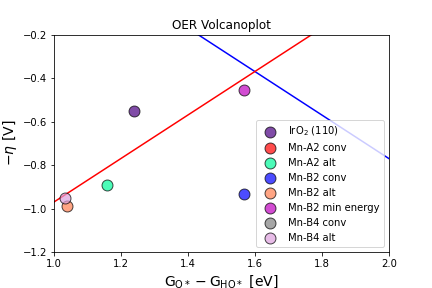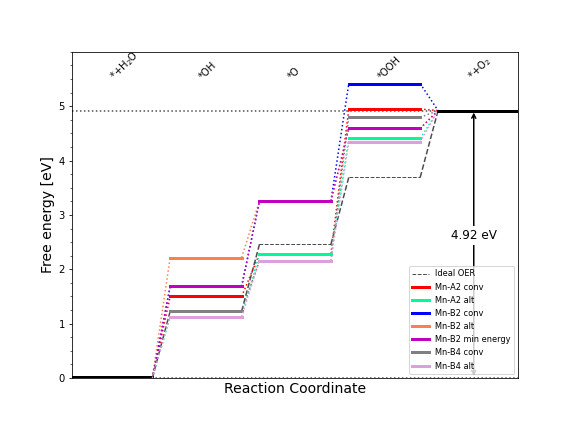Ru rich Ru-Mn-O phases for selective suppression of chlorine evolution in sea water electrolysis
Authors: Catalina Astudillo, Kateřina Minhová Macounová, Adrian Malte Frandsen, Roman Nebel, Jan Rossmeisl, Petr Krtil
This electronic supplementary material contains a database for the structures, scripts and additional figures for the article.

Figure S01: Surface labelling of the rutile (110) structure. Letters denote positions for Ru atom substitution and numbers active sites.

Figure S02: The OER activity volcano. Different points represent different active sites and/or reaction pathways on the Ru-Mn-O surface. The pathways studied are the conventionally accepted Eley Rideal single site mechanism (conv) and the alternate cus site mechanism involving protons migrating to the bridge in -OH and -OOH intermediates (alt) [see references 31 and 40 in the main document]. For the case of Mn-B2, the pathway of most stable intermediates is a combination of these aforementioned pathways ("min energy"). IrO2 has been added as a reference representing an active catalyst.

Figure S03: A different perspective on Figure S02.

Figure S04: Free energy diagram along the reaction coordinate for the probed OER mechanisms and surface sites.
